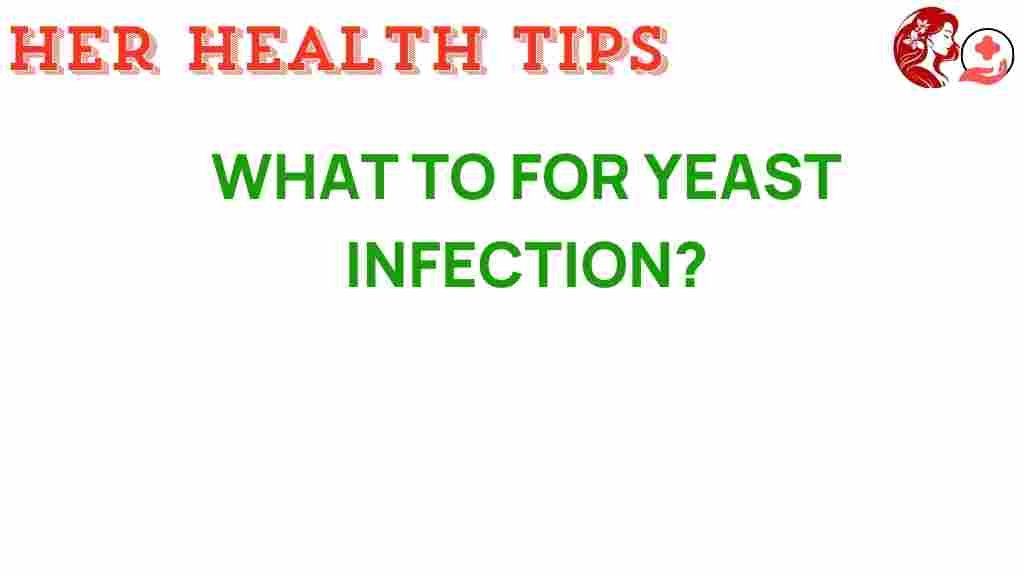Unraveling the Mystery: What to Do for Yeast Infections?
Yeast infections are a common yet often misunderstood condition, primarily affecting women’s health. Understanding the symptoms and knowing how to address them can make a significant difference in managing this condition effectively. In this article, we will explore yeast infections, including their symptoms, treatment options, prevention strategies, home remedies, and lifestyle tips to maintain optimal hygiene.
Understanding Yeast Infections
A yeast infection, medically known as vulvovaginal candidiasis, is caused by an overgrowth of a fungus called Candida, which is normally present in small amounts in the body. When the balance of bacteria and yeast is disrupted, Candida can multiply and lead to uncomfortable symptoms.
Common Symptoms of Yeast Infections
Recognizing the symptoms of a yeast infection is crucial for timely intervention. Common symptoms include:
- Itching and irritation in the vaginal area
- Redness and swelling of the vulva
- Unusual discharge that is thick, white, and resembles cottage cheese
- Burning sensation during urination or intercourse
While yeast infections are not classified as sexually transmitted infections (STIs), they can be triggered by sexual activity, hormonal changes, and certain medications. If you experience these symptoms, it’s essential to consult with a healthcare professional for diagnosis and treatment options.
Treatment Options for Yeast Infections
When it comes to treating yeast infections, there are several options available. Here’s a breakdown of effective treatment methods:
- Over-the-Counter Antifungal Medications: Many antifungal creams and suppositories, such as clotrimazole and miconazole, are available without a prescription. These medications can provide relief within a few days.
- Prescription Antifungal Medication: If over-the-counter options are ineffective, a healthcare provider may prescribe stronger antifungal medications, such as fluconazole.
- Home Remedies: Some people find relief from symptoms using natural remedies. These include:
- Probiotics: Consuming yogurt or supplements containing Lactobacillus can help restore the natural balance of bacteria.
- Tea Tree Oil: This essential oil has antifungal properties and can be diluted and applied topically.
- Coconut Oil: Known for its antifungal effects, coconut oil can be used both topically and as part of your diet.
Always consult with a healthcare provider before starting any new treatment, especially if you have a recurrent yeast infection.
Preventing Yeast Infections
Prevention is key when it comes to managing yeast infections. Here are some effective strategies:
- Maintain Good Hygiene: Keeping the vaginal area clean and dry is essential. Use mild, unscented soap and avoid douching, as it can disrupt the natural balance.
- Wear Breathable Clothing: Opt for cotton underwear and loose-fitting clothing to reduce moisture and allow airflow.
- Avoid Irritants: Scented soaps, feminine hygiene products, and bubble baths can irritate the vaginal area. Stick to hypoallergenic products.
- Dietary Considerations: A balanced diet that limits sugar and refined carbohydrates can help prevent yeast overgrowth. Incorporate probiotics into your diet for additional support.
- Manage Stress: Stress can affect your immune system, making you more susceptible to infections. Consider stress-reducing activities like yoga or meditation.
Lifestyle Tips for Maintaining Vaginal Health
Incorporating healthy lifestyle choices can significantly impact your overall vaginal health. Some tips include:
- Stay Hydrated: Drinking plenty of water helps maintain overall health and can support your immune system.
- Regular Exercise: Physical activity promotes healthy circulation and can help reduce stress levels.
- Regular Check-Ups: Visit your healthcare provider for routine exams and screenings to detect and address any issues early.
When to Seek Healthcare
While yeast infections are typically not serious, there are times when you should seek medical attention:
- If symptoms persist despite treatment
- If you experience recurrent infections (four or more per year)
- If you have a weakened immune system or are pregnant
- If you notice unusual symptoms such as a strong odor or blood in the discharge
Receiving professional guidance is crucial, as some symptoms may mimic other conditions, such as bacterial vaginosis or STIs.
Troubleshooting Common Issues
Sometimes, individuals may encounter issues when dealing with yeast infections. Here are a few troubleshooting tips:
- Resistance to Treatment: If you find that over-the-counter treatments are not working, consult a healthcare provider. They may need to reassess your diagnosis.
- Frequent Recurrences: Keeping a diary of your symptoms, triggers, and treatments can help identify patterns and inform your healthcare provider.
- Medication Side Effects: If you experience side effects from antifungal medications, inform your healthcare provider for possible alternatives.
Conclusion
Yeast infections can be uncomfortable, but with proper understanding, effective treatment, and preventive measures, they can be managed successfully. Maintaining good hygiene, being aware of symptoms, and adopting a healthy lifestyle can drastically reduce the risk of developing yeast infections. If you encounter persistent issues or have concerns about your vaginal health, seeking advice from a healthcare professional is always the best course of action.
For more information on women’s health and yeast infections, visit the CDC’s page on yeast infections. Remember, knowledge is your best ally in maintaining health and well-being.
Take charge of your health and embrace a lifestyle that supports your body’s natural balance!
This article is in the category Reproductive and created by HerHealthTips Team

1 thought on “Unraveling the Mystery: What to Do for Yeast Infections?”